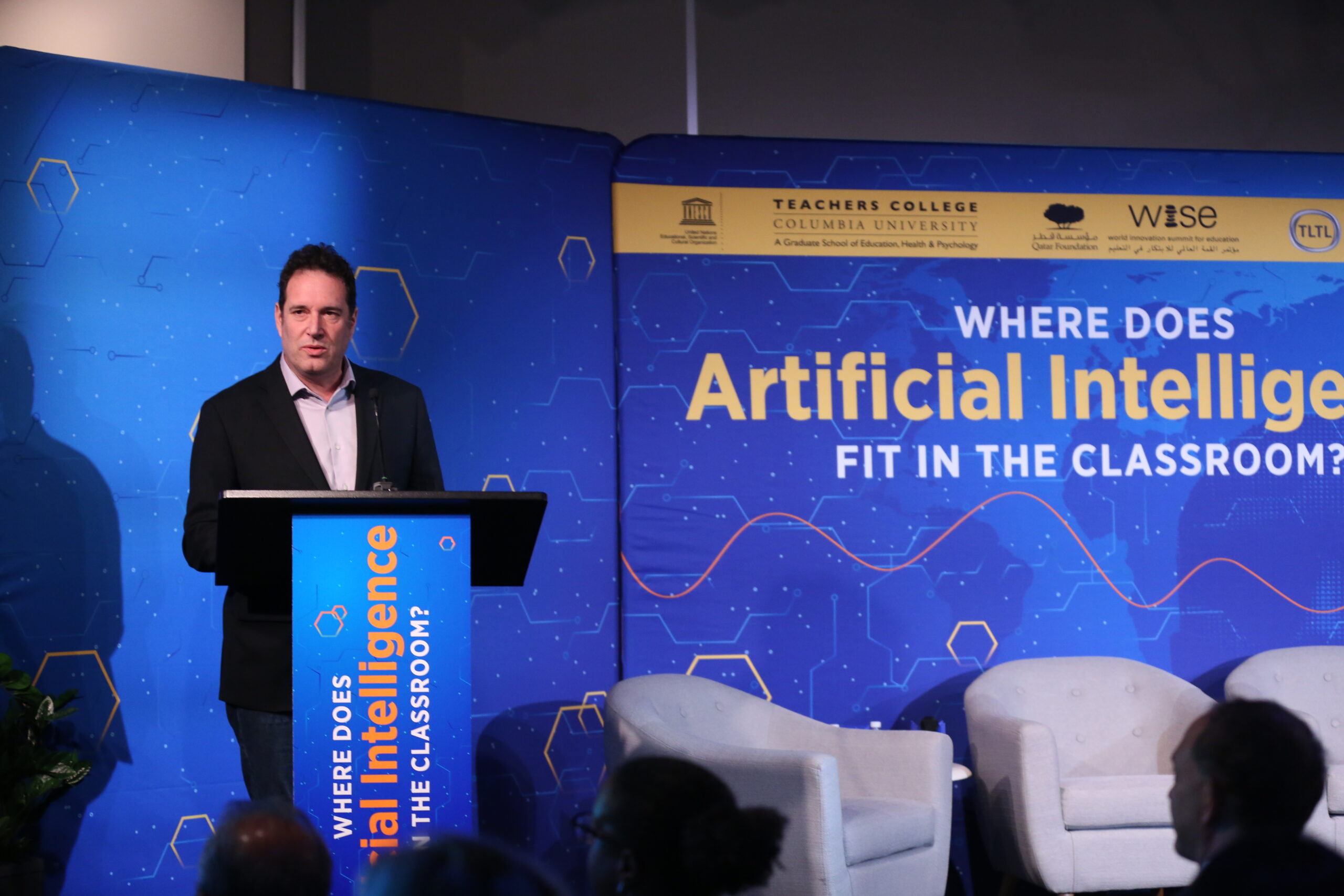Artificial intelligence—the ability of a computer program to perform human tasks such as thinking and learning, sometimes referred to as machine learning—is changing classrooms in both K12 and higher ed.
But robotics has some questioning whether AI is just a fad that will eventually fade into obscurity or alter teaching and learning processes as we know it. Experts discussed the topic at a recent conference for future K12 educators held by the Teachers College at Columbia University, “Where Does Artificial Intelligence Fit in the Classroom?”
Borhene Chakroun, director of the division for policies and lifelong learning systems at UNESCO, kicked off the event extolling the future of AI technology and its potential to “profoundly alter every aspect of the teaching and learning process.”
He also acknowledged the implications of AI and how it is altering how machines and humans work together. Stakeholders are somewhat bewildered as they look to tackle questions such as whether AI will render the teaching profession obsolete or make other human tasks redundant, he said. (The answer? Too soon to tell, he added.)
To minimize any adverse effects, he suggested developing a “regulatory framework” that governs AI technologies while supporting innovation. Such policies must address student privacy and encourage transparency of the AI algorithms—datasets on human behaviors that are used to build AI functions, Chakroun said.
The evolution of AI
Keynote speaker Hod Lipson, a roboticist and mechanical engineer, said AI has developed in waves. The first iteration, a full 50 years ago, was based on a system of rules, logic and reasoning. The AI industry is now in an era of cognitive computing, which is the ability for machines to mimic humans, he said. The current system relies on pattern recognition datasets and natural language processing.

Photo by Bruce Gilbert
“Each wave brings a capability that was thought impossible in the previous waves,” said Lipson, who serves as Columbia University’s Creative Machines Lab director. “For the first time in history, we have machines that can understand images, video, tech, audio—things that we thought impossible just five years ago.”
He envisions a future where AI technologies can engage in conversations with humans, though it may be a while before this type of tool is commercially available. As demonstrated in an experiment conducted with two bots, he said today’s AI tools (think: Alexa and Google Home) can’t comprehend and infer meaning and nuance. They can only offer “canned conversations,” or dispense information such as restaurant locations or weather forecasts, he noted.
AI applications in schools
A panel of experts examined AI’s potential impact on K12 and postsecondary schools, including the various applications of AI in learning environments, such as online assessments that gauge reading ability and plagiarism detection.
Sandra Okita, an associate professor of technology and education at Teachers College, said AI holds promise as a tool to monitor student performance and gather information about students who perform well. Armed with this information, a bot can detect patterns in a particular student’s progression that signals a learning decline, which instructors could use to intervene if a student is on the brink of failing, she said.
Moreover, AI can support hands-on learning in younger grades, said Stefania Druga, the founder of HakIDemia and Afrimakers. She worked with elementary students over three years and conducted a study using an AI education platform she developed called Cognimates.
In the multi-year study, students programmed bots to play games like Rock, Paper, Scissors and built gaming applications that featured characters to reflect their race and ethnicity. For me, the success of AI in the classroom comes from the diversity of projects that kids are creating,” said Druga.
She saw several benefits to having children learn to program AI bots. For one, their perceptions of technology changed from “The computer is smarter than me” to “I’m smarter than the computer.” She also saw high levels of engagement with kids, who spent 2.5 hours determined to collect data, test their game, and share results with classmates, Druga said.
Druga said students picked up the AI concepts quickly. And her research revealed that their understanding did not depend on how much time they spent coding or prior experience, but how much they interacted with peers and the length of time to test and analyze their designs.
What’s clear, she added, is that AI tools will continue to proliferate, and that the teacher’s role will evolve. “Be okay to learn from young people rather than be holders of knowledge,” she advised the educators and future educators in attendance.
Designing for inclusion
Margaret Price, the principal design strategist for Microsoft, urged developers and technologists to design AI applications and platforms with inclusivity in mind. Tools must address various contexts, capabilities and motivations of individuals, she said. To avoid biases and assumptions, developers might consider end users in the design process or co-create with teachers and students.
“Designing for inclusion often begins with identifying and recognizing who might be excluded,” Price said. “Ultimately, the goal is to create equitable solutions that can truly help drive positive outcomes.”
Emily Brown is an associate editor at UB.





